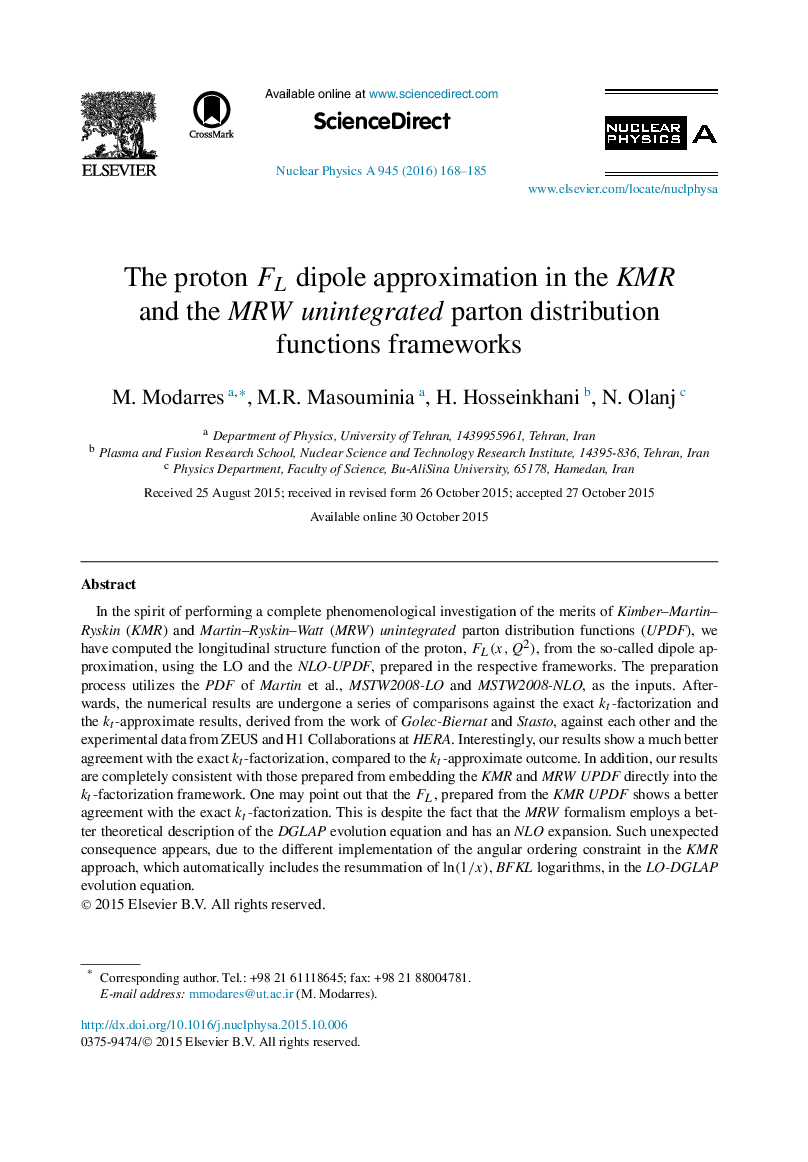| Article ID | Journal | Published Year | Pages | File Type |
|---|---|---|---|---|
| 1835743 | Nuclear Physics A | 2016 | 18 Pages |
In the spirit of performing a complete phenomenological investigation of the merits of Kimber–Martin–Ryskin (KMR) and Martin–Ryskin–Watt (MRW) unintegrated parton distribution functions (UPDF ), we have computed the longitudinal structure function of the proton, FL(x,Q2)FL(x,Q2), from the so-called dipole approximation, using the LO and the NLO-UPDF, prepared in the respective frameworks. The preparation process utilizes the PDF of Martin et al., MSTW2008-LO and MSTW2008-NLO , as the inputs. Afterwards, the numerical results are undergone a series of comparisons against the exact ktkt-factorization and the ktkt-approximate results, derived from the work of Golec-Biernat and Stasto, against each other and the experimental data from ZEUS and H1 Collaborations at HERA . Interestingly, our results show a much better agreement with the exact ktkt-factorization, compared to the ktkt-approximate outcome. In addition, our results are completely consistent with those prepared from embedding the KMR and MRW UPDF directly into the ktkt-factorization framework. One may point out that the FLFL, prepared from the KMR UPDF shows a better agreement with the exact ktkt-factorization. This is despite the fact that the MRW formalism employs a better theoretical description of the DGLAP evolution equation and has an NLO expansion. Such unexpected consequence appears, due to the different implementation of the angular ordering constraint in the KMR approach, which automatically includes the resummation of ln(1/x)ln(1/x), BFKL logarithms, in the LO-DGLAP evolution equation.
